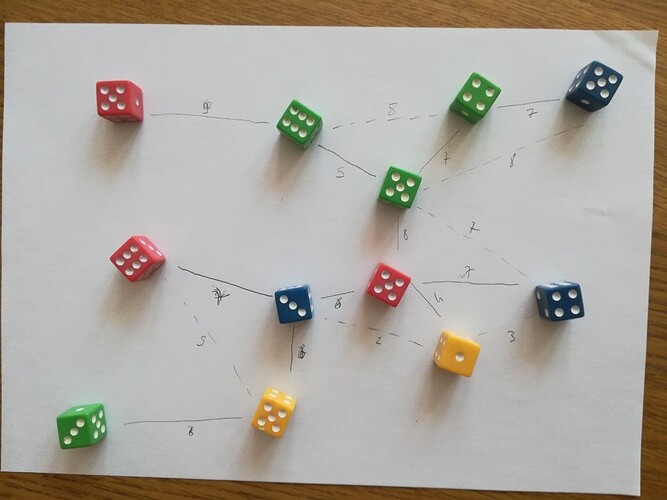I know, I know… I promised to devote myself on growing and support Thálassa with an adventure guide and the first module. The guide will arrive when inspiration strikes me (and when the time will come, it’s going to be quick to write down). The module is quite ambitious since it will be a situational ecosystem to play ancient Knossos in the Mythical Age.
It will takes time, a lot. For now I am documenting and I also ordered a insightful book on excavations and archeological park of Knossos.
Writing rulesets is my greatest enjoyment when it comes to RPGs. I really suck hard in writing adventures, but I really like to hack and mix rules, tables and ideas. Sorry pals, Here we go again! ^_^"
My plans were to write a new Cairn Hack which was to be a sword and planet themed game, allegedly named “Swordsmen of the Solar System”. Its lore would be based on beloved authors (by me at least) like Edgar Rice Burroughs, C.L. Moore and Leigh Brackett. One day I will definitely try to write something like this.
Coming to the topic of this post, I am writing the other game I wanted to do for some time now. Like Cairn took Knave backgrounds and equipment tables, I based them on a little unknown gem called Spacer, a Knave sci-fi hack by Paul Umbers. I wanted to translate Spacer in Italian a while ago and have gone through half of it, but the lack of any interested in the Italian game community stopped me before completion.
Spacer stuck in my head though. Let me be very clear: I totally love Knave as a streamlined accessible version of classic D&D and its compatibility to classic bestiaries without fuss. For sci-fi, though, this compatibility is not that necessary, since there are few sci-fi D&D based system (Hulks & Horrors, Space Dungeon and Machinations of the Space Princess come to mind, bet there are a few others out there).
Plerions aka Pulsars with Nebula, are “a type of nebula sometimes found inside the shell of a supernova remnant (SNR), powered by winds generated by a central pulsar”. I simply need an astronomical object name that sounds good, that’s why!
Plerion will be a space opera adventure game. My debt to Traveller is huge, but I am not aiming at the type of science fiction. My primary inspiration for this are Jack Vance’s Gaean Reach, Becky Chambers’s Wayfarer Series, Mass Effect, and to a lesser degree David Brin’s Uplift Series. Travel between the stars will be faster (1pc/hour), there will be huge empires, large unexplored regions, grandeur, a dash of transhumanism. This is the general plan.
This is a rough outline of things to be done:
-
(almost there) re-skin Cairn merging Spacer inventory. I’ve already written down “The Principles of the Universe” section to give an idea of the implied setting.
-
(WIP) Psionics and Cybernetics section, cleaning up the Character Creation section of the relative tables.
-
Vehicles & Starship, in Into the Odd way of doing.
-
Worlds & Systems: here the magic happens. It will be the most hard section to draft, since I need to cobble together an algorithm worthy of Traveller (but simpler, for goodness’ sake!). I am also trying to figure out the best way to represent 3 dimensions if possibile, since the common work around for this type of games is to flatten everything on a hexmap.
-
Spacefaring Adventures: this wants to be a referee’s guide to writing adventures and gives random tables and such things.
-
Creatures: here I am going to adapt the sci-fi section of so1um enhanced’s bestiary.
-
Loadouts to emulate classes through equipment, Cairn style.
Since it’s based on the same chassis, Plerion will be mostly compatible with another sci-fi hack in the makings, the Monolith SRD by Adam Hensley, which is a different look on the matter with careers a là Into the Odd, and a different way to manage travel and maps. Both Adam and I are excited of this portability, since the community will have more toolkits to build their sci-fi game of preference.
